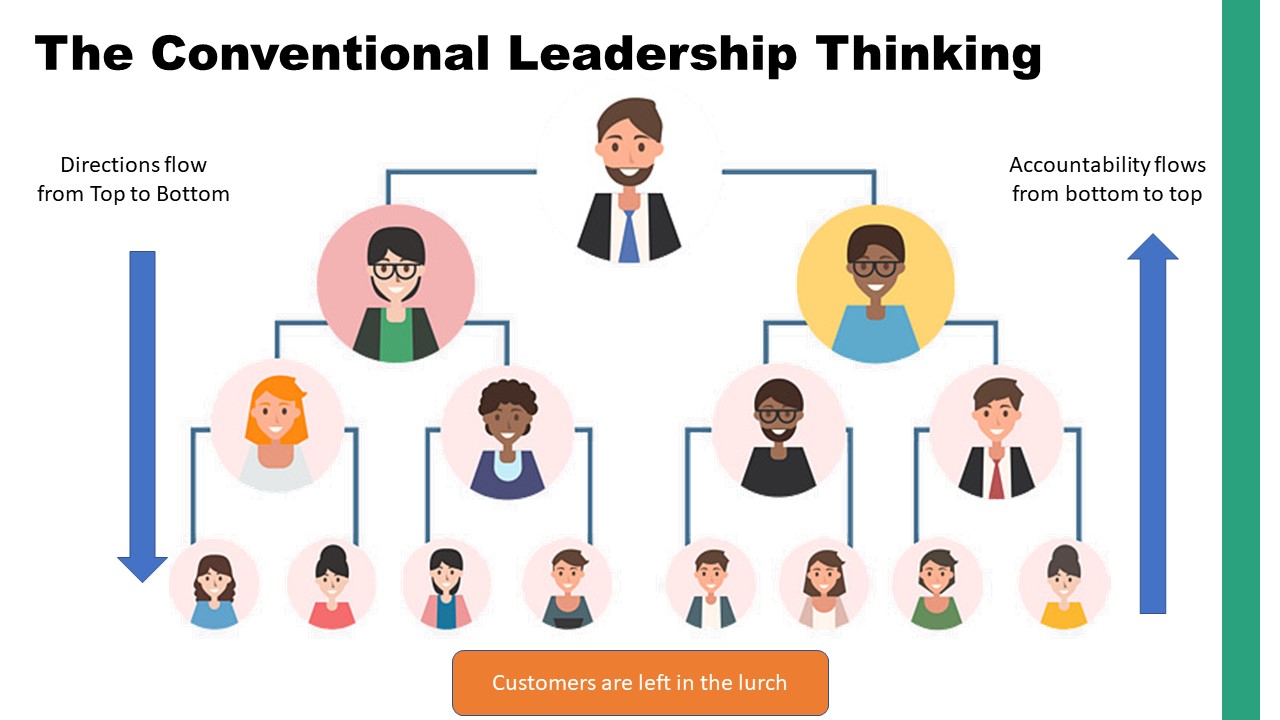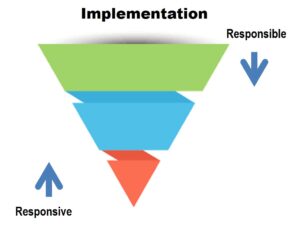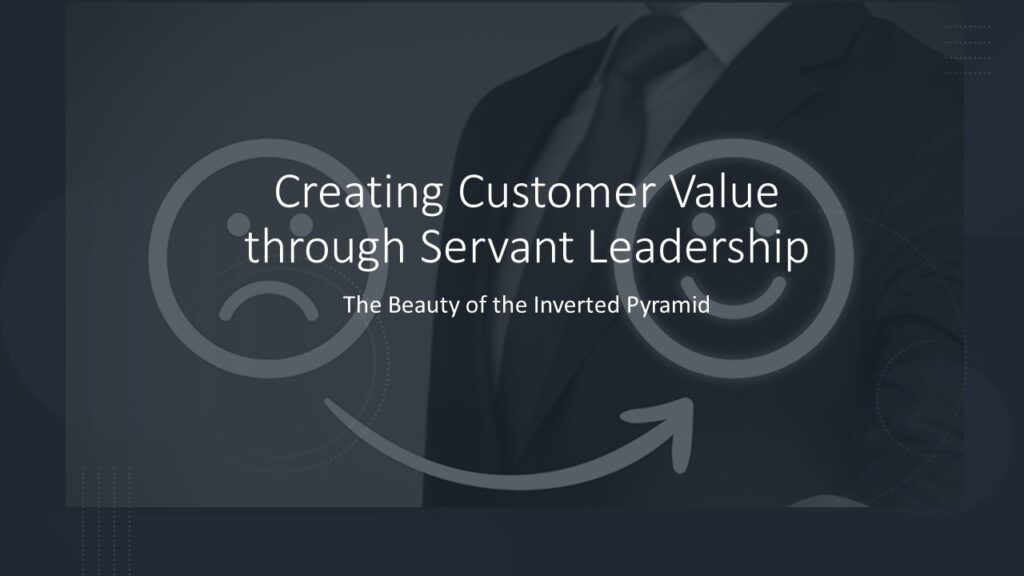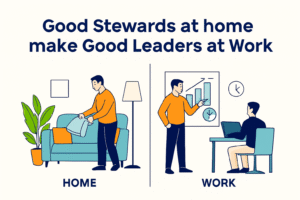Creating Customer value through Servant Leadership
‘This is ridiculous!’
Very often this is the thought that runs in our head, sometimes even speak aloud – as we run into a wall trying to get a solution, process a claim or service something
The service person gives you a vibe which could mean any of the following
“I need to play it safe about my job. Your pain comes next if at all”
‘The person who issued this would have told you’
‘This is what the system says..’
‘Let me call my manager’ ( I know he can’t do anything about this either!)
One gets the feeling that the ‘house always wins’ and now I have to pay more or convince more people to solve the problem’. As a customer, there is a sense that you have been denied what is rightfully yours. Ken Blanchard calls it the duck syndrome, where everyone who you contact in the hierarchy says quack, quack, and pushes it to the next level up.
How does it happen?
Organizations want to reduce variability of responses in the final mile.
Systematized response ensures predictability of the cost of business or service and guards against any potential exploitation. Organizations believe that all admissible responses to a customer have to pre-exist in the defined manual.
Over time this codified customer interaction actually ‘trims’ away the grease of good customer service and adds to the cost of business and risks losing customers. Good Customer service relies on the intrinsic human quality of empathy and the willingness to help resolve any genuine and logical issue in the best possible manner.
Perceived lack of ownership and the capability question
Most pyramidal hierarchies believe that the level of ownership and decision making capabilities is weak at the lower rungs. Therefore actions have to be guided and clearly defined for the organization to be successful.

Not true.
Many organizations have generated phenomenal customer value with a distributed model of individual or team ownership. Google would not be in a position to conceive and pursue so many ‘moonshots’ if there were no microcosms of risk taking, experiment and accountability. Southwest airlines pride themselves in empowering employees to do what is right. Ritz Carlton creates a culture where any employee will say “I will take care of it” immaterial of which function the problem belongs to.
The Fear Factor
Organisations end up creating a culture of fear, that if the processes are not followed to the letter, their jobs are at risk. So instead of trying to “serve” the customer, employees are obsessed about following the written down procedures and policies. Added to this, a leadership which thinks that “they know the best” do not ever ask for feedback from the people who are actually dealing with the real stuff. Of course, no one dares to volunteer feedback because of the fear factor.
Servant Leadership as a lever of resolution
Servant Leadership behaviour is defined as a set of 7 unique behaviours called DEEP BHC and it is a measurable and actionable process. It helps create an idea generative organization, a reductive approach to processes that enhances speed of response, and thoughtfulness that improves customer delight

Servant Leadership recommends that organisations invert the traditional pyramid and let the employees at the “bottom of the pyramid” do what is best when it comes to customer issue resolution. Two specific behaviors of Servant Leaders, mentioned below, can help build ownership and enhance customer value through better engagement and service
Empowerment:
Building the confidence that all employee feedback is welcome and will receive a thought through response from the organization.
Recognizing that people are capable of decision making and it is most likely in the interest of the organization
Creating some wiggle room for decision making, that is not codified. Let the employees know that every situation cannot be codified and employees can use their grey matter based on the situation, as long as it is in line with the organisation’s vision, mission and values. Encouraging peer learning from customer feedback and encouraging response in real time.
Helping others grow and succeed:
Success for the frontline executive is about making themselves and the organization look good in the eyes of the customer.
Taking a holistic approach to their (frontline) development and not viewing everything through the lens of revenue alone can be a key differentiator for the leader and the organization.
Encouraging them to ask questions and find answers, training them to build not just their service acumen but also their business acumen, creating an atmosphere that encourages initiative and acknowledges effort, are some aspects that will make them well rounded contributors.
According to a research paper by Robert Saxe and Barton Weitz on a ‘Measure of the customer orientation of salespeople’, Salespeople with higher levels of customer orientation truly care about customers, and thus engage in actions that customers value, such as listening to customer feedback and solving customer problems. Salespeople who demonstrate higher levels of adaptive selling adjust their sales strategies in ways that better fit customers’ needs and preferences (Spiro and Weitz 1990). Together then, customer orientation and adaptive selling lead to win-win outcomes because customers are served in better, more individually relevant ways, producing higher levels of success for the sales force and the organization.
A flip on the traditional leadership model, Servant Leadership invigorates people at various levels through trust and care, and by default inculcates better ownership and accountability. It is an approach that has been successfully implemented by organizations who have ‘flipped’ conventional thought and built successful and robust businesses. Google, Starbucks, Southwest Airlines, Tatas to name a few.
(A edited version of this article also appeared in the Enparadigm Blog in June 2021
https://enparadigm.com/blog/creating-customer-value-through-servant-leadership/)
________________________________________________________________________________________
 Dr. Madana Kumar is the Servant Leadership Evangelist and Chief Consultant at Leadyne. You can connect with him here or contact him here.
Dr. Madana Kumar is the Servant Leadership Evangelist and Chief Consultant at Leadyne. You can connect with him here or contact him here.




Comments are closed.